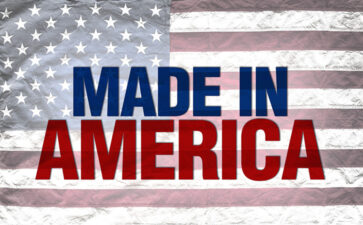Why Durometer Does Matter
One of the unequivocal benefits of tire, or “foam,” fill technology for Off-the-Road (OTR) heavy vehicle tires is its adaptability and capacity for operator customization according to specific needs and conditions faced on the job. Not all OTR vehicles are created alike, just like the requirements and rigors of each industry and each worksite present new and different challenges. Filled-pneumatic tires are uniquely suited to help OTR vehicle managers better maneuver and meet the characteristics of a particular work application scenario. For example: Is the job site flat, but littered with debris that will pose an overt tire puncture risk? It is located on a gradated hillside, where the risk of vehicle tip-over and worker injury is greatly aggravated? These are important considerations for OTR vehicle managers and should figure prominently into tire technology selection.
Enter TyrFil™. For the past five decades, our foam fill technology has been assisting industries such as construction, mining, waste management and agricultural development to keep their essential vehicle tires flat-free and keep expensive equipment, and most importantly, manpower safer and more resilient on the job. TyrFil can be easily pumped into any pneumatic tire to replace air with a durable synthetic elastomer core that will eliminate flats, ensure a smoother, flatproofed ride for operators, and vastly reduce tire wear, tear, and denigration. The prevention of unwanted tire flats helps save operators and project managers valuable time and money and keeps projects on track and free from unexpected transportation hurdles.
Additionally, the smoother, less jarring and bumpy ride that is possible using foam-filled tire technology offers myriad advantages over solid aperture tires. (Foam filled tires eliminate much of the cross-axle vibration and G-force impact that is typical of solid tire operation—vibrations that may cause muscular/skeletal impact on drivers who spend up to 8 hours behind the wheel on the job site.) Tire filled OTR tires are also more sustainable allowing tire carcasses to be successfully re-treaded and reutilized for “second life” use.
In addition to eliminating tire flats, TyrFil also offers:
- Fewer tip-overs due to sudden flats (which can often be caused by a loss of tire pressure)
- Better ballast for steep hillside jobs or unusual overload conditions
- Eliminates the potential for tires or wheels to fail with explosive force (due to a loss of tire pressure—a factor which is a huge safety issue, especially in fields such as underground mining)
- Fewer bent wheels
- Less mechanical downtime from tire malfunction
- Extended “limp-in” capability (prevents drivers from getting stuck out in the field from premature tire failure)
But there are other notable advantages to the use of foam fill tire technology—chief among them being the ability to manipulate and customize tire durometer for added safety and better operability. Durometer is used to describe a material’s rating on the hardness scale. Higher numbers on the durometer scale indicate a greater resistance to indentation, and thus harder materials. Lower numbers indicate less resistance and softer materials.
Using foam filled tires offers a greater degree of adaptability and choice. Why does this matter? Polyurethane filled pneumatic tires have a broader variety of tread patterns, tire constructions, and compounds available. This allows for greater flexibility in various applications. Specifically, the variety of durometers available for tire fill enable a degree of customization not easily achieved with other tire formats. With foam filled tires, the type of fill can closely fit the application, from a softer fill for comfort and deflection to a harder fill for slow moving equipment with high pressure requirements. Also, the fill pressure can be varied to more closely mimic pneumatic tire pressure.
For example, a low durometer of 10 (such as TyrFil™ Flex) offers the lowest durometer for maximum deflection and an air-like ride. A medium durometer of 30 (such as TyrFil™ Pro) offers a general-purpose material for use in 90% of tire fill applications. An alternate like TyrFil™ Ultra offers greater heat dissipation qualities, which are optimal for severe applications such as underground mining where heat and load levels are especially high. A high durometer of 55 (such as TyrFil™ HeviDuty) delivers added durability in high load applications with minimal tire deflection.
The ability to choose and customize durometer with flatproofing tire technology lets OTR vehicle operators get the most out of their workhorse equipment—be it a bulldozer, excavator, skid steer loader or other essential form of transportation—while also ensuring that vehicles remain flat-free throughout the duration of the project.
To learn more about tire durometer choice and the many benefits of tire flatproofing technology, visit the No More Solid Shock website here.


